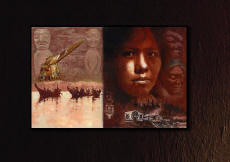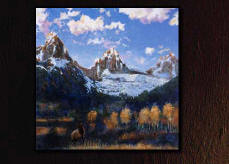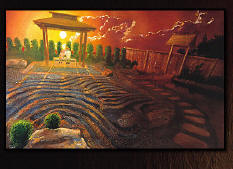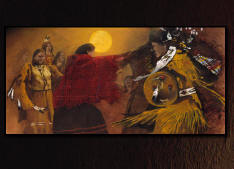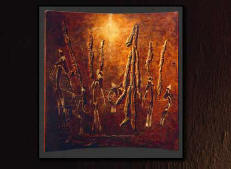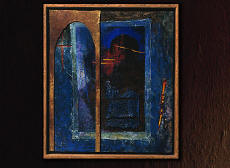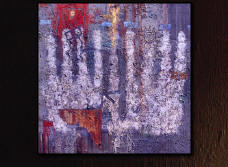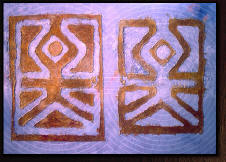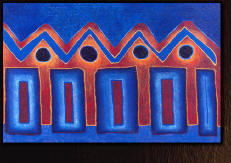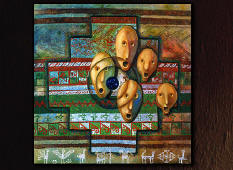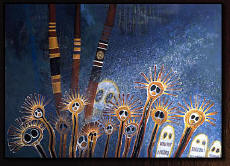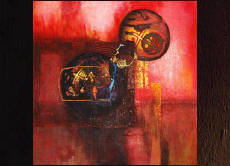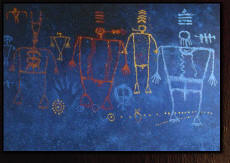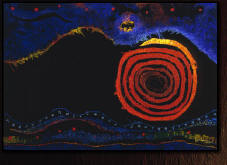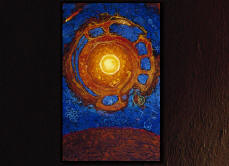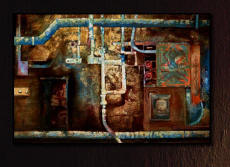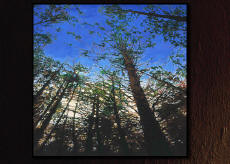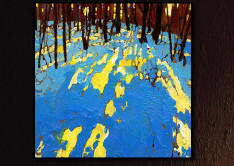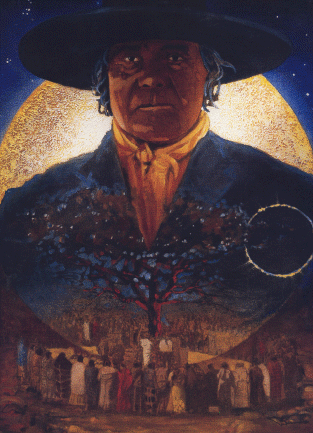|
|||||||||
|
pictures taken from http://www.paulmorinstudios.com/ |
ANALYSIS OF Paul Morin’s “THE GHOST DANCE” COVER ILLUSTRATION Our favourite illustration of Paul’s is the cover of The Ghost Dance, written by Alice McLerran. This image is also featured in the book, at the end of which Paul states: “Throughout this book we see circles, symbolizing the ‘sacred hoop’ of the nation, and also the cycle of seasons; the earth, moon, and sun; the circle of life. I feel that the work is both a profound personal statement and, more important, an epic universal statement.”
· The People, in a line in the bottom portion of the picture, look peaceful, united, and calm. · Their position on the ground creates stability. · The way the tree’s branches and leaves spread out horizontally over The People give the viewer a sense of protection. · The hat of the large figure, as well, hangs like a protective canopy over the tree and The People.
· Excitement in the illustration emerges from the large figure vertically aligned with the center of the tree, protruding up into the sky.
· The scene appears strong and stable, with no diagonal lines.
· Stoic and rugged, the placement of the large figure “in the sky” immediately lends itself to being spiritual, rather than human. Ø The bottom half of a picture feels more threatened, heavier, sadder, or constrained; objects in the bottom half also feel more grounded. · There is a feeling of sadness and reverence with The People in the circle in the bottom portion of the picture. · Also, there is a sense of community: communal strength of their beliefs, being grounded on the earth together. · The viewer waits with the circle of people: silent and full of expectation. Ø An object placed higher up on the page has “greater pictorial weight”. · Definitely, the spiritual figure holds great pictorial weight by being placed in the highest central point of the picture.
· The spiritual figure definitely has ownership of being the center of the viewer’s attention. The viewer is first attracted to this large and central being overlooking the earth. Ø What happens when the focus of attention is shifted away from the center of the page? · The ring of light, placed slightly to the right side, momentarily draws the viewer’s eyes from the figure. Ø The edges and corners of the picture are the edges and corners of the picture-world. · Not complete as an entity in the picture, the large figure seems to extend beyond what the viewer and the group of people can see. Ø The closer an object is to the edge of the center, the greater the tension. · The smaller ring of light brings tension; it is mystifying and out of place. It causes the viewer to question and wonder the meaning of the gathering. Ø Artists seldom place their figures in the exact center of the page unless that figure is meant to be an object of meditation. · It is very difficult for the viewer look away from the tree. It feels like the tree is perhaps bringing both the upper and lower scenes together. Ø Which objects are moving, which are immobile? · The smaller ring of light definitely shows movement in the picture, being the one object that is not centered. The spiritual figure and the tree seem immobile to the viewer.
· Although the facial features of the large figure do not immediately indicate positive feelings, the contrast of the bright circle behind him eludes to a sense of security or salvation.
· The circle of life gives a feeling of protection.
· There is great vulnerability in The People surrounding the tree because of their smaller form and reverent stance.
· In this illustration, the use of shapes is much more dominant for the viewer than color. However, it is through the use of color and the transparent quality of the images that we are able to notice the circles. Ø We search for repetition to make sense of what we see, both chaos and unending repetition is disorienting. · The theme of the circle is constant throughout the picture. Images that extend beyond the circle provide a break in the repetition in the circular theme to prevent monotony.
· The contrast of the bright circle against the night sky draws the viewer in, to feel the intended “hope” in the scene.
Ø Objects placed in a space draw us into the picture. · The viewer associates with the group of people and feels the connection of being on the ground, below the spiritual figure. Ø Space isolates a figure. · The vast distance between the figure’s face and The People gives an air of anticipation, as though the viewer can sense something about to happen. · Connected by the central tree, The People and the figure are not isolated from one another but joined spiritually. As such, the spirituality is also felt by the viewer. Ø Overlapping objects pierce or violate the space, but also join them together in a single unit. · Everyone is in the circle. It is in the overlapping that a spiritual connection is formed. Ø Depth is created by smaller, thinner objects higher on the page. · The People that are on the far side of the gathering seem to stretch deep into the page. · It is as if The People are moving toward the “hope” as they are drawn into the circle.
|
||||||||
| Copyright © 2006 TEN PROGRAM! | |||||||||
